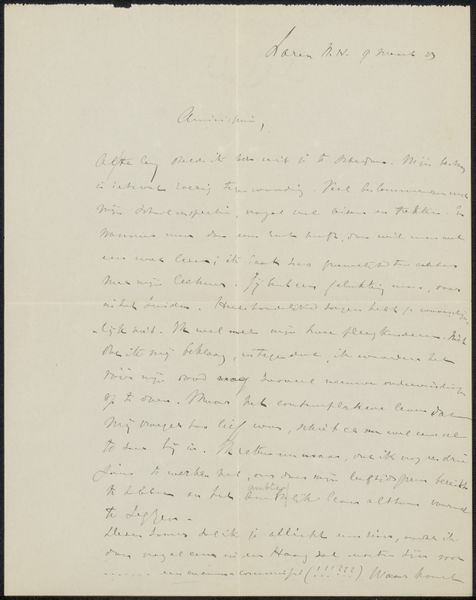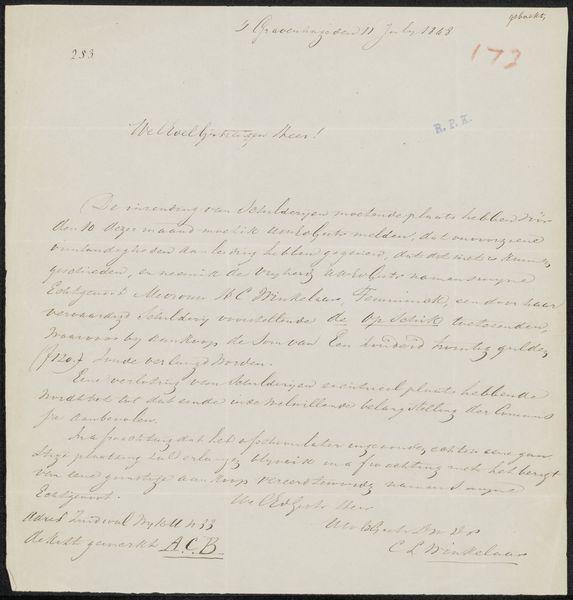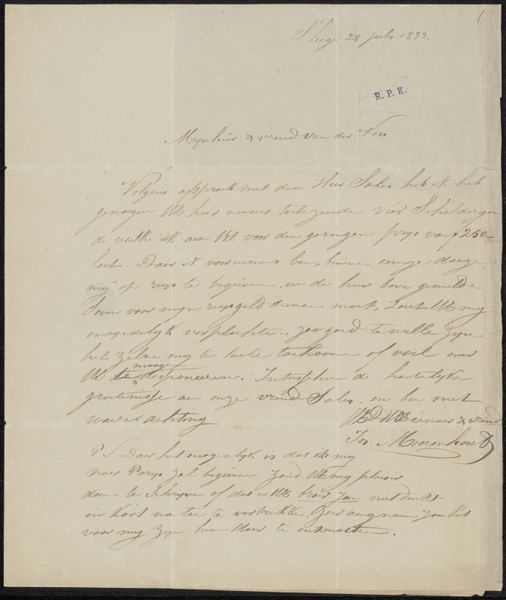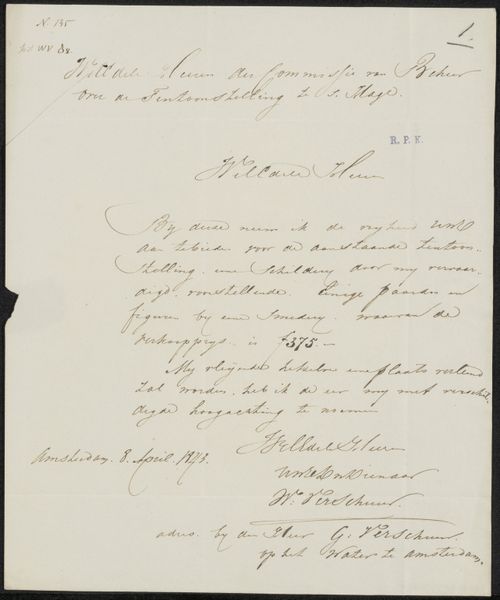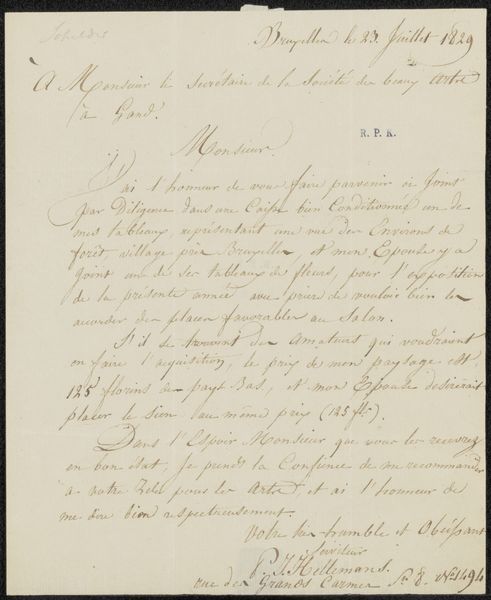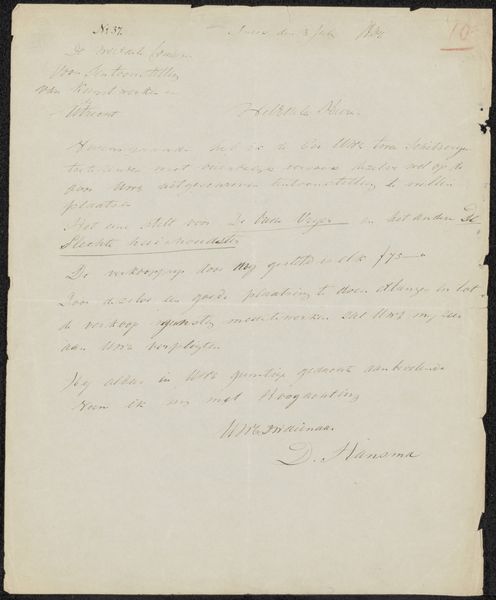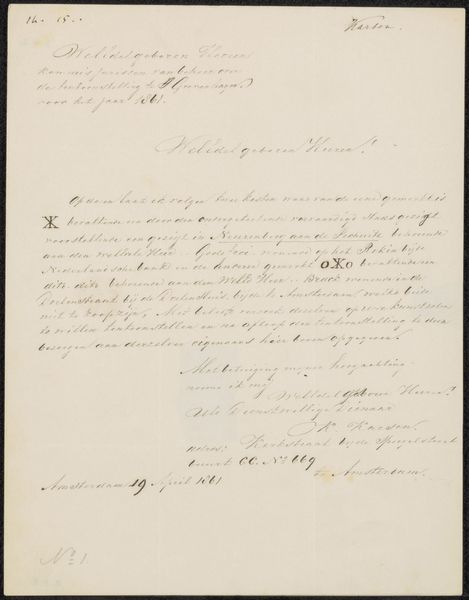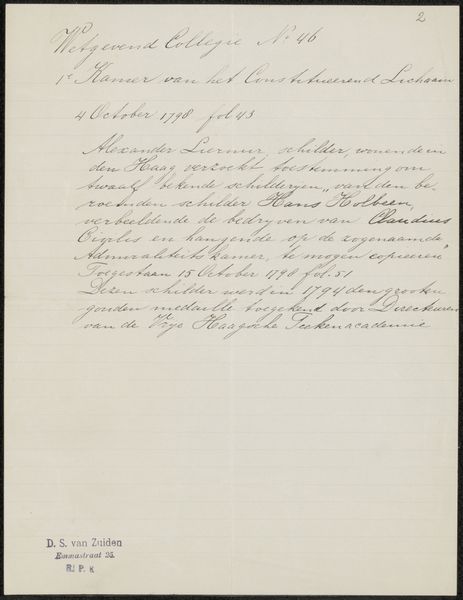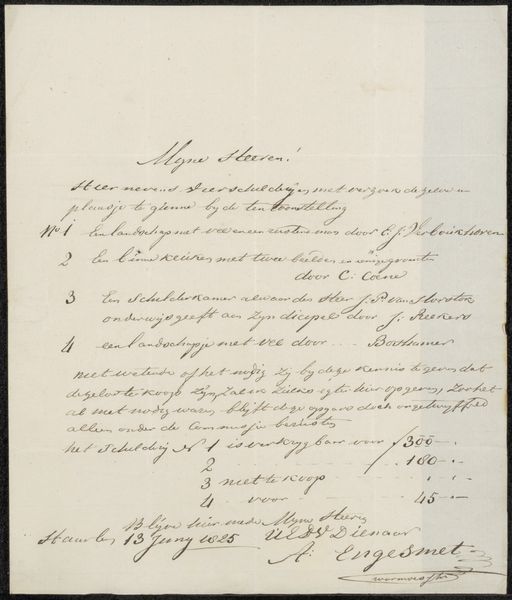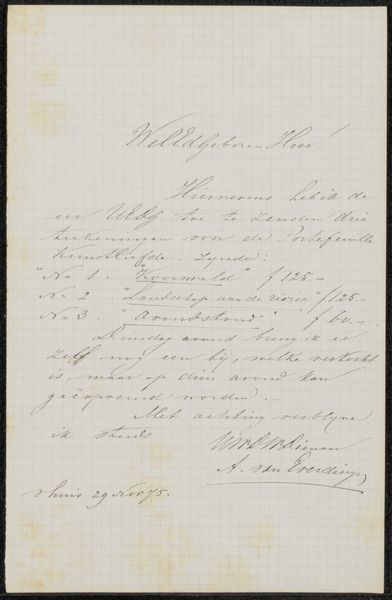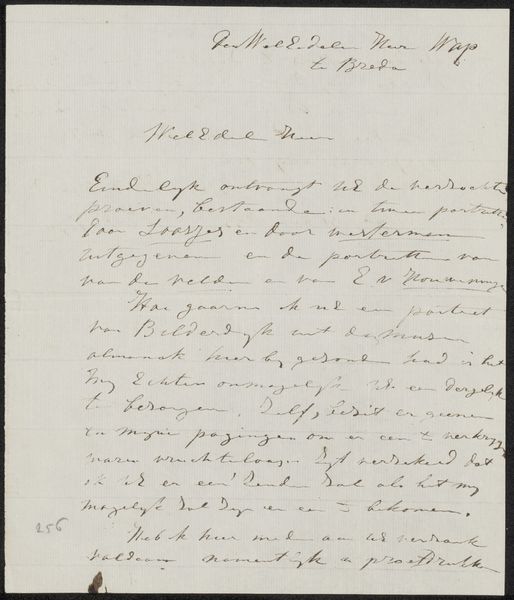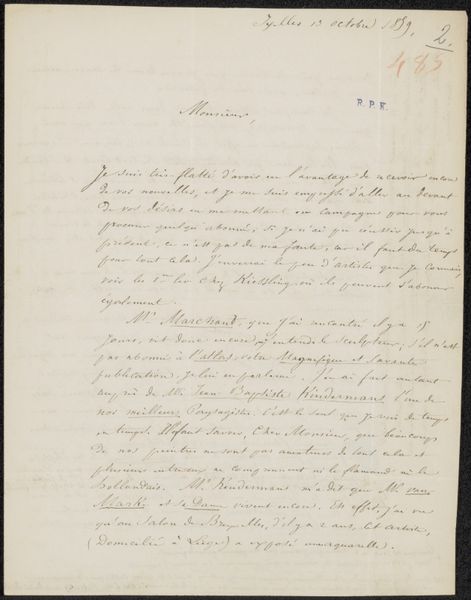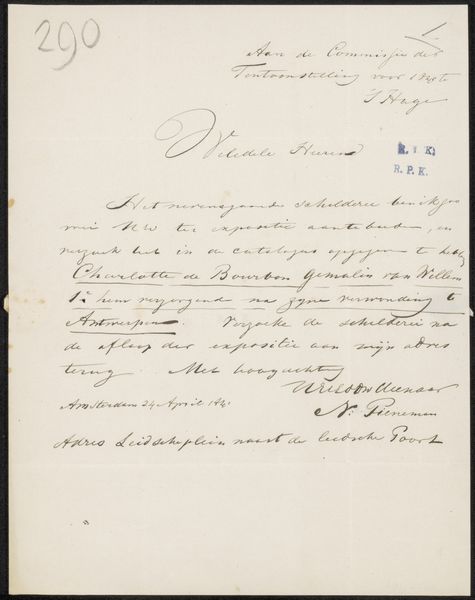
Brief aan de commissie van de Tentoonstelling van Levende Meesters in Den Haag Possibly 1841 - 1844
0:00
0:00
drawing, paper, ink, pen
#
drawing
#
ink paper printed
#
paper
#
ink
#
romanticism
#
pen
Copyright: Rijks Museum: Open Domain
Curator: Here we have "Brief aan de commissie van de Tentoonstelling van Levende Meesters in Den Haag," which translates to "Letter to the Committee of the Exhibition of Living Masters in The Hague," possibly created between 1841 and 1844 by Laurent Joseph Hart. It's crafted with ink and pen on paper. My first impression is its delicacy, a sense of a whispered plea caught on paper. Editor: Indeed. The spidery quality of the ink creates such a fragile, transient feeling. There's an intimacy implied by the handwritten nature of the document, offering a glimpse into a specific moment of interaction within the Dutch art world of the time. Curator: It appears to be a letter from the artist petitioning for his work to be included in the exhibition. We must understand this in the context of the Salon system, a formal apparatus for regulating and promoting artistic success. What could being excluded have meant for this artist's livelihood and status? Editor: Precisely. And consider how the very act of handwriting – the pressure applied, the flourishes made – reveals not only his intent but also something of his social positioning. Look at how the lines vary in thickness and the space between the words; there's both confidence and, perhaps, some anxious haste. Curator: Also note that he is offering the Commission the ability to buy copies of one of the Great Medals by Rubens, so there are layers of potential artistic and political patronage being discussed. Editor: Let’s examine the text more closely. There’s a negotiation of value taking place—both artistic and monetary. He's acutely aware of his standing and the mechanisms that might ensure it. What can semiotics and formalism tell us about how power can be encoded even in something so simple as syntax or lettering? Curator: These archival pieces remind us that behind every grand exhibition and celebrated artwork, there is a complex web of relationships, rejections, and, ideally, acceptances. Each carefully worded phrase reveals a deeper historical narrative. Editor: Precisely. It takes us beyond the polished facade of art history and into the very human, and often fraught, spaces where artistic careers are forged. The visual impact rests not just in its appearance, but in the meaning it has for its historical space.
Comments
No comments
Be the first to comment and join the conversation on the ultimate creative platform.
